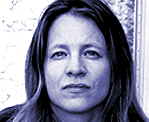Nurit Stadler

Nurit Stadler is an associate professor in the Department of Sociology and Anthropology at the Hebrew University of Jerusalem. Her research interests include Israel’s Ultraorthodox community, fundamentalism, Greek-Orthodox and Catholic rituals in Jerusalem, text-based communities, The veneration of Mary in Israel/Palestine, and the study of current fertility shrines and rituals in sacred places and sacred tombs.
Stadler is the author of Yeshiva Fundamentalism: Piety, Gender and Resistance in the Ultra-Orthodox World published with NYU Press, in 2008. Her book is an analysis of the reconstruction of masculine in the fundamentalist world as a result of the challenges of modernity. It addresses these questions through an investigation of the redefinition of the family, work, the army and civil society in the Ultra-Orthodox yeshiva world in Israel. Stadler is also the author of A Well-Worn Tallis for a New Ceremony (2012) with Academic Studies Press (Brighton, MA). In this book she explored new aspects of voluntarism, citizenship, family life and the concept of freedom in the ultra Orthodox culture today. Recently Stadler published her ethnographic study “Between Scripture and Performance”, on the worship of Mary in Jerusalem (published in Religion). In this manuscript she analyses the Jerusalem Dormition Feast that is held on a canonical route that includes the purported sites of some of the key moments in the Virgin’s life. She explored the reactions to the local ceremonial on the part of the other participants and pilgrims from all over the orthodox world.
Since 2012 she is involved with the project on sacred shrines in Israel/Palestine. In this project she wishes to extend her work and study various aspect on the sacred shrines, especially female shrines and investigate worship in these places, among them, The Lady of the Wall, (a mural covering part of Israel’s separation barrier, located about 200 meters from the IDF checkpoint in Bethlehem), the worship at the shrine of Mariam Baouardy at Ibllin, (a Carmelite nun 1871), a shrine that has become a magnet for pilgrims who partake in a vibrant form of cult worship as well as the tomb of Rachel the Matriarch on the way to Bethlehem and the tomb of Rachel the wife of Rabbi Akkiva in Tiberias . Her comparative study of these shrines opens a set of questions about the centrality of fertility cults at the age of modernity and technology of reproduction.